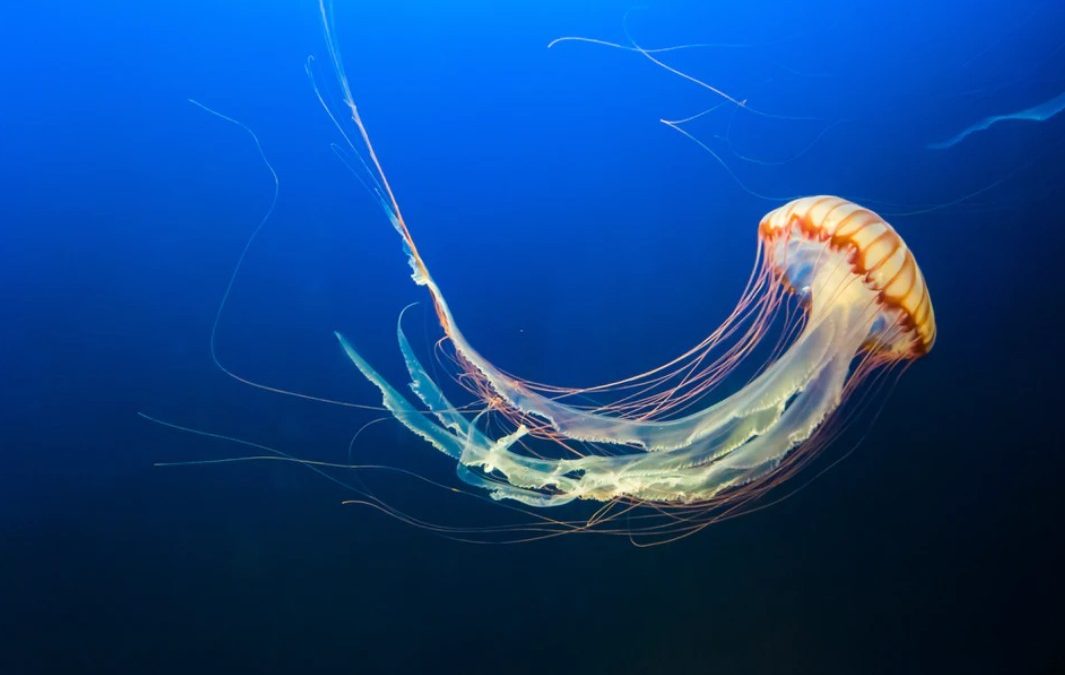Jellyfish stings. Nothing ruins a day on the beach faster, especially if it is a kid that gets stung. And worse – the treatment being applied in some places is out-of-date. This is making the situation worse.

A team of scientists at the National University of Ireland, Galway (NUIG) decided to research the best methods of relief once and for all. The research came about after a rash of stingings in the waters off Galway. This was thanks to a jellyfish called the lion’s mane. The lion’s mane jellyfish is the most problematic jellyfish in Ireland and the UK. Thousands of bathers are badly stung each year. Here in Australia, the most common type of jellyfish sting comes from bluebottles. Also called Portuguese man o’ war, they are found all around the coastline of Australia.

Jellyfish stings = Ew
The Research
There are new findings from NUI Galway working in conjunction with the University of Hawaii at Manoa. They have identified the best way to treat stings. For jellyfish and bluebottle stings, douse the sting area with vinegar or Sting No More. This gets the tentacles out, with the help of a pair of tweezers. The vinegar deactivates the tentacles. Then douse the area with the hottest water the patient can stand. The hot water denatures the poison that causes the pain.

You need to soak the sting area in hot water for at least half an hour. Therefore the ideal beach sting treatment pack would include vinegar, tweezers, an ice cream bucket, and a large thermos of hot water. You need to keep topping up the water in the bucket to keep it hot for as long as you can. You can use the elbow skin test to check the water temperature, especially for children. But the hotter the water the patient can stand, the better. Venom protein is denatured by heat treatment, the pain does not usually resolve until hot water immersion therapy is started.
The use of heat to treat sea stings was first recorded in 1758. German fishermen were reported to have applied a hot poultice onto sting wounds caused by weever fish. For centuries heat has been used as a traditional cure for marine stings – heating methods included hot water, vinegar, stones and even hot urine. Now we know where the pee method came from. It’s the heat that helps, not the chemical make-up of the urine. But, body temperatures aren’t quite warm enough to do the job, so put your bladder away.

The Same Treatment Applies
Said Dr Tom Doyle, Lecturer in Zoology at NUI Galway, “What most people don’t understand is that these jellyfish – the lion’s mane, the Portuguese man o’ war and the box jellyfish, are as different from each other as a dog and a snake. Therefore when developing first aid treatment for a jellyfish sting it is very important to test different treatments on these very different types of jellyfish. Now that we have shown that vinegar and hot water work on these three jellyfish species, it will be much easier to standardise and simplify first aid for jellyfish stings where many different types of jellyfish occur.”

Current best practices in many parts of the world recommend using sea water and cold packs. This is not the correct action for treating these jellyfish stings, as it causes increases in venom delivery. But rinsing with vinegar or Sting No More Spray does not increase venom delivery.
Keep your anti-sting kit in your beach buggy, and those marine creatures won’t beat you! Happy swimming!
If you’d prefer to stay at home and check out the beach in virtual reality, check this out!

Editor for Silver Magazine Gold Coast

